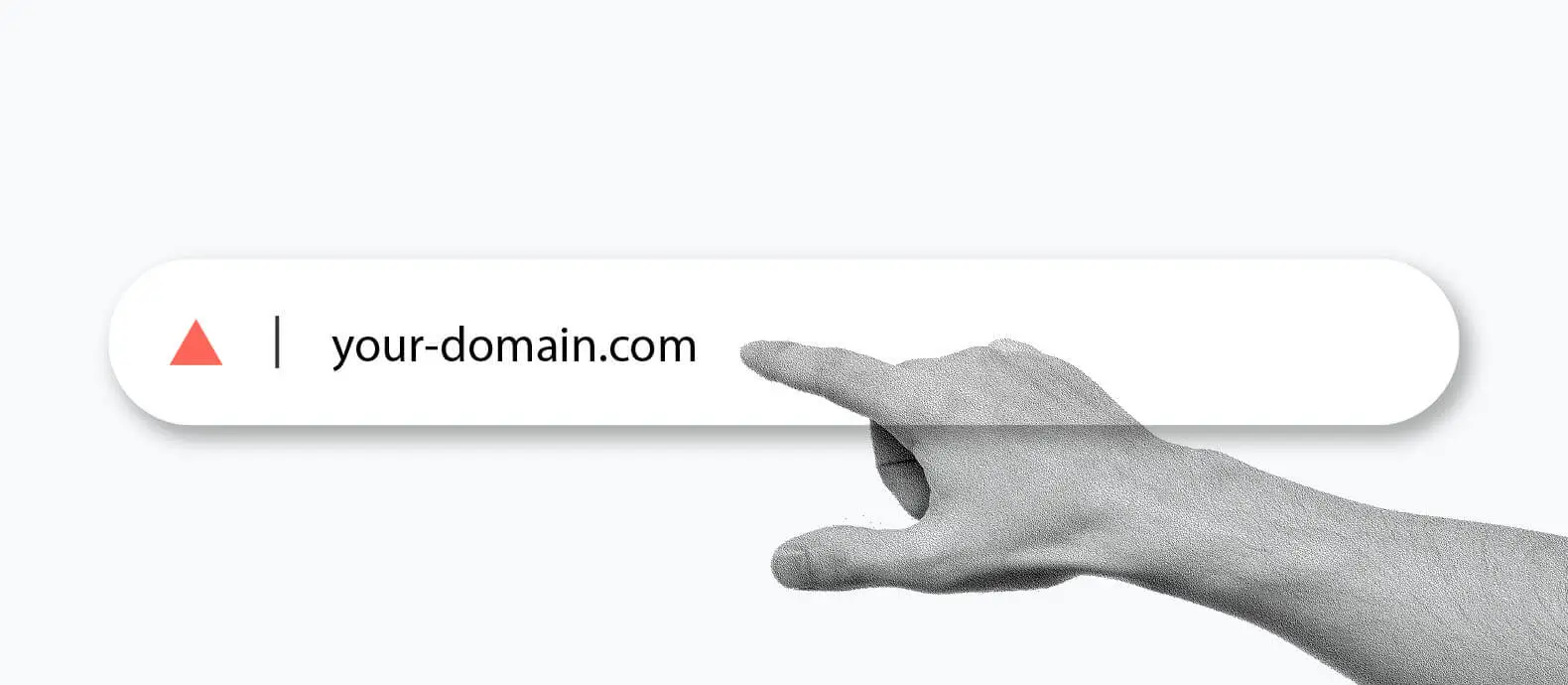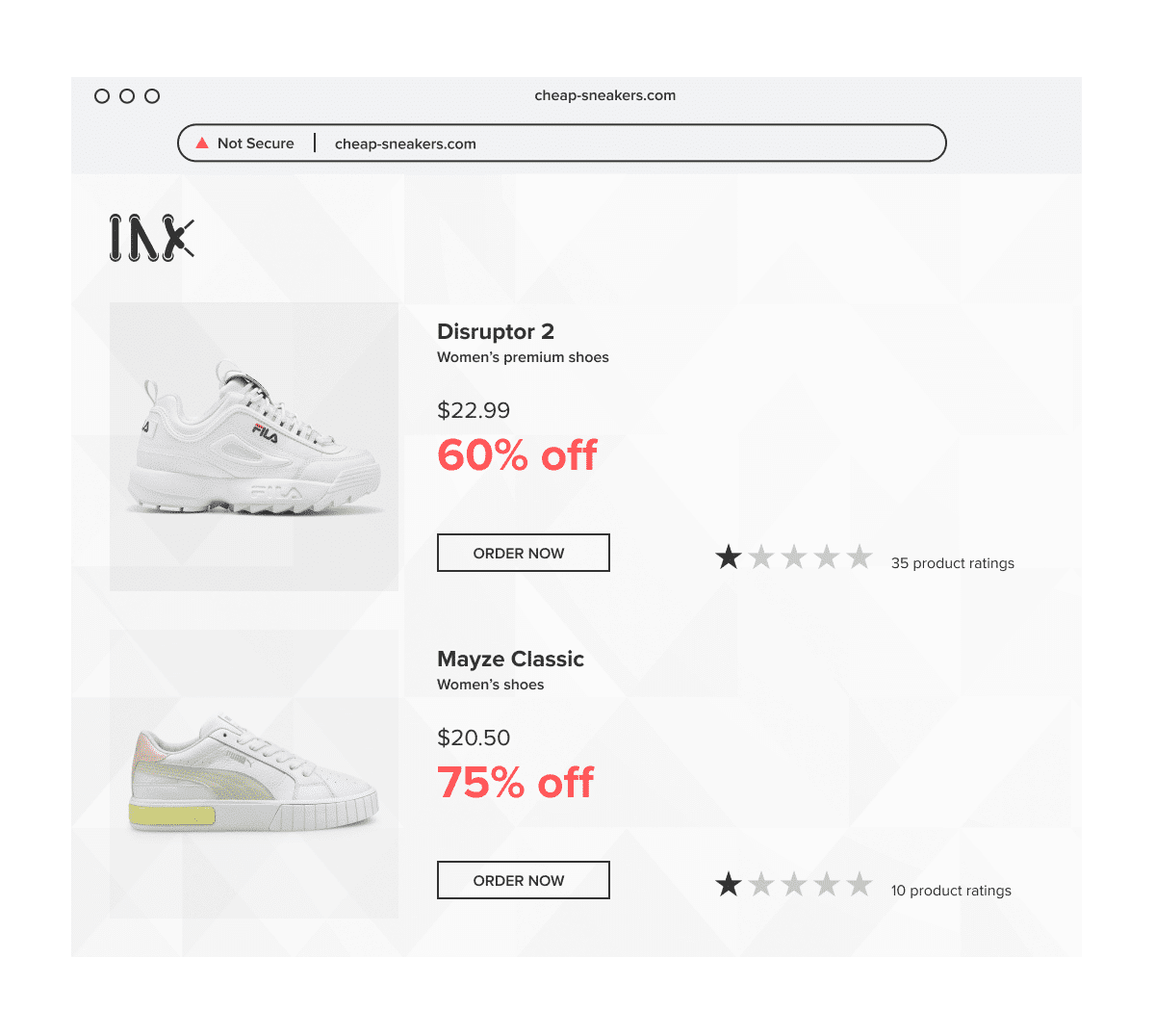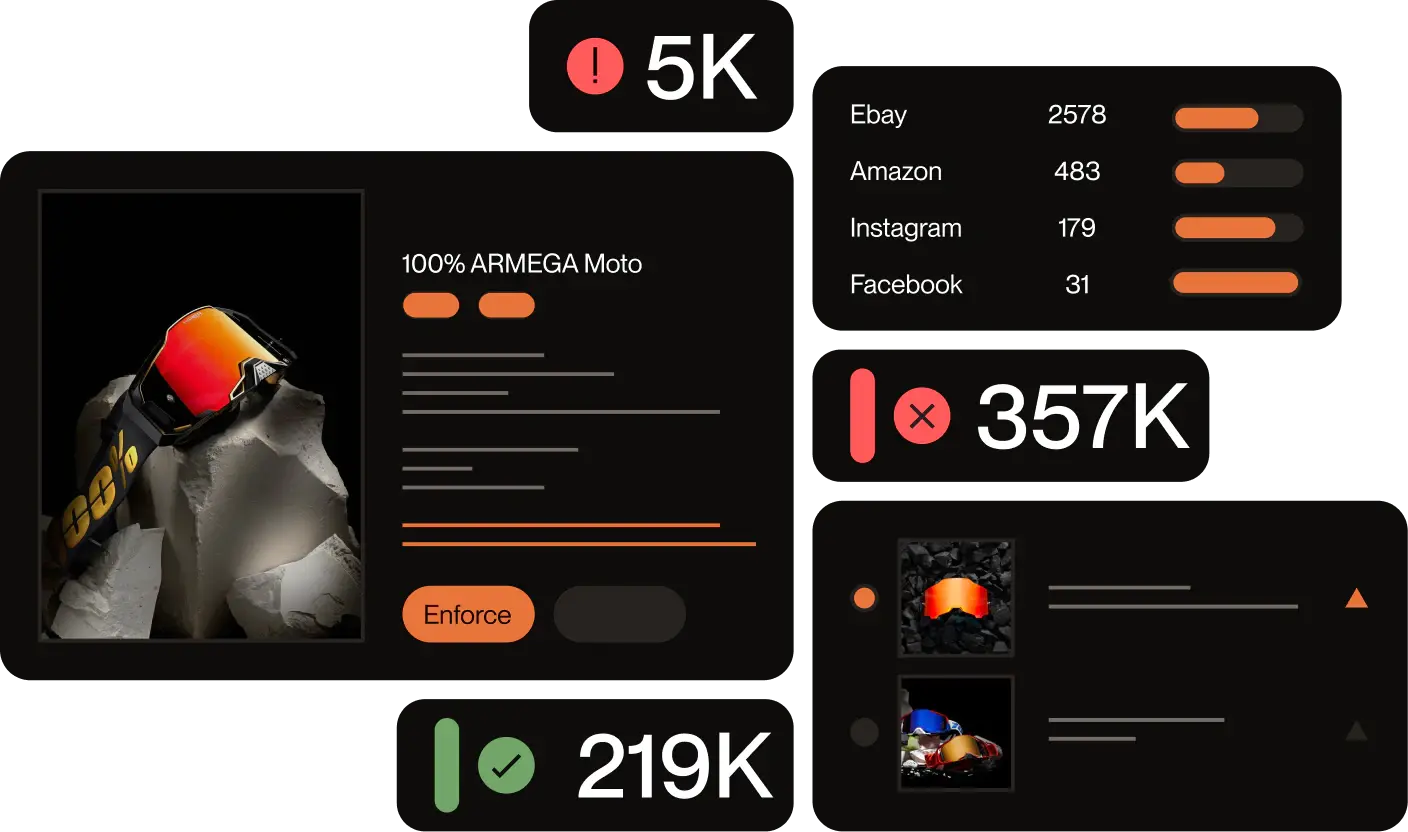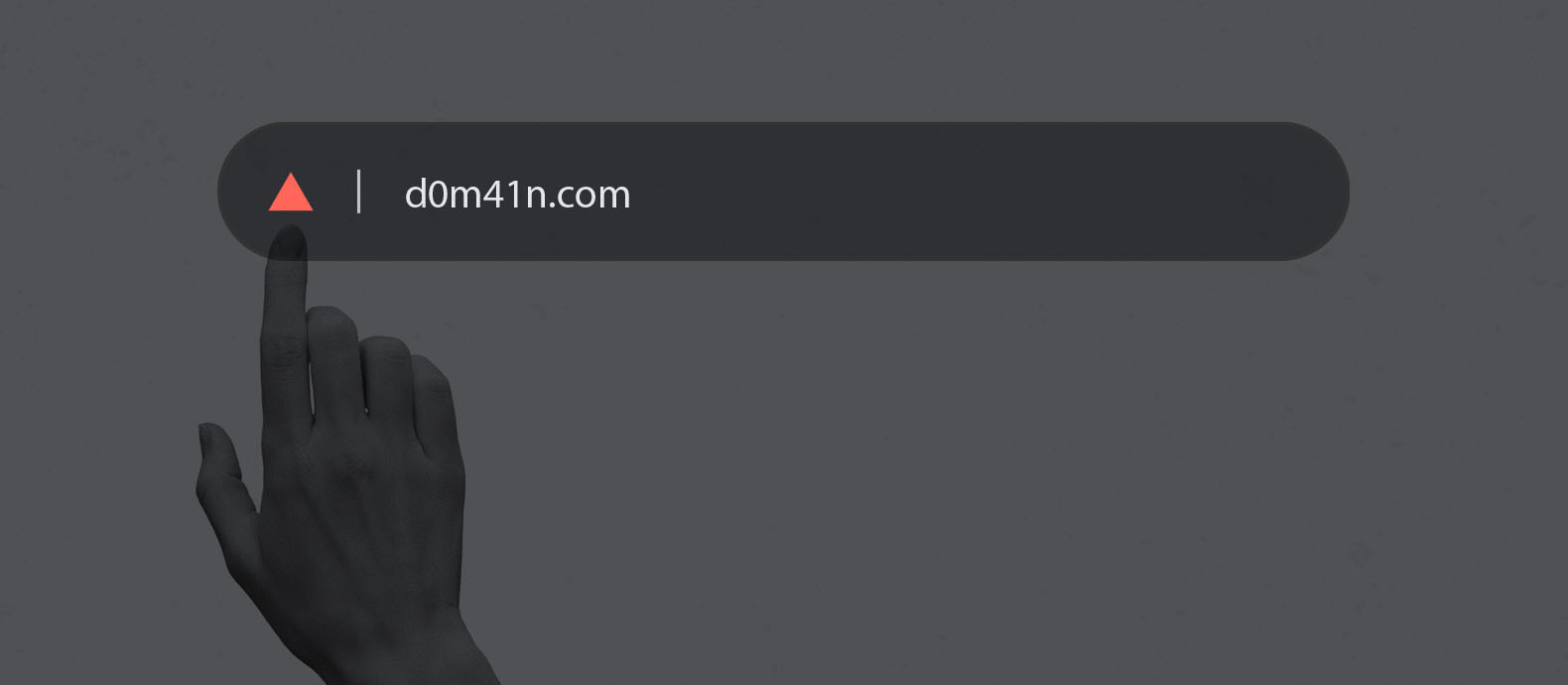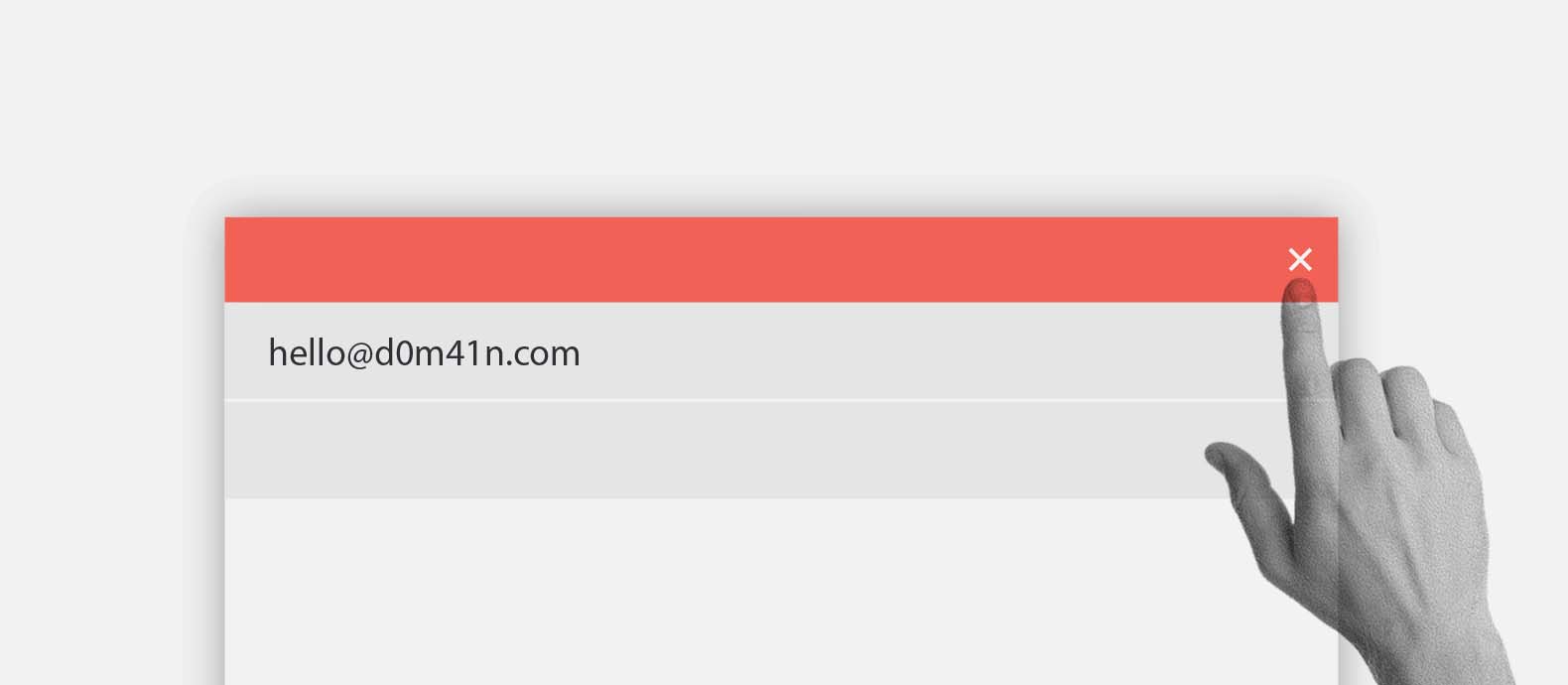What if your domain name was stolen or a fake website started scamming your customers? For many businesses, this isn’t a “what if”—it’s reality.
With over 1,300 clients and the largest database in the industry, Red Points analyzed the picture: since 2022, we have seen an increase of 161% in reported standalone websites.
This means two things:
- Scammers are using advanced tools, like AI, to create fake domains at scale, making it feel like an endless game of whack-a-mole.
- The longer these fake domains stay active, the more damage they cause—hurting your reputation, losing customer trust, and impacting your revenue.
If you’re ready to protect your domain and find better ways to detect and shut down fake websites, you’ve come to the right place.
Guide to securing your domain name
Scenario 1: You’re starting to create your domain
When you’re building your online presence, security starts with the basics:
Choose a trusted registrar
Your registrar is your first line of defense. Select one with a strong reputation for security features like:
- Domain locking: Prevent unauthorized transfers or updates.
- Two-factor authentication (2FA): Add a critical layer of account protection.
Check customer reviews, prioritize transparent pricing, and choose a registrar with responsive customer support to ensure your domain is in good hands.
Enabled domain privacy
During registration, don’t overlook domain privacy. Without it, your personal information—like your name and email—will be public in the WHOIS database, making you a target for phishing and spam.
Enabling privacy hides this information, protecting your identity, reducing risks to your brand, and safeguarding your reputation. Most registrars offer this feature for a minimal cost.
Scenario 2: You already have a domain
If you’ve had your domain for a while, it’s time to double-check its security and strengthen your defenses:
Secure your account with strong credentials
Don’t assume your domain is safe—cybercriminals often exploit weak account protections. Ensure you:
- Use strong, unique passwords: Combine uppercase and lowercase letters, numbers, and symbols. Avoid reusing passwords.
- Leverage a password manager: Tools like LastPass or 1Password securely store complex passwords and simplify account access.
- Enable two-factor authentication (2FA): This additional barrier prevents unauthorized access even if your password is compromised.
Proactively strengthening your credentials can prevent hijacking and manipulation of your domain.
Scenario 3: You’re under a domain attack
What if bad actors are already using fake domains or typosquatting to damage your brand? You need tools to fight back:
Use domain takedown tools
Advanced domain takedown solutions, like Red Points, help you:
- Monitor for threats in real-time: Detect fake websites, typosquatting, and suspicious activities as they occur.
- Automate takedowns: Quickly process fraudulent domains and request removal, minimizing potential damage.
- Track and prioritize incidents: Use detailed dashboards to monitor threats and respond effectively based on severity.
Red Points leverages AI-powered algorithms, natural language processing, and partnerships with hosting providers to identify and act on threats rapidly.
No matter where you are in your journey—starting out, managing a domain, or fighting off attacks—these steps ensure your domain stays protected, your brand’s reputation intact, and your business secure.
Breaking down the costs of domain security
Investing in domain security is about protecting your brand from financial loss and reputational harm. Here’s a breakdown of typical costs involved in proactive and reactive approaches:
Proactive Costs: Securing your domain before issues arise
Proactive measures provide peace of mind and long-term savings by preventing costly crises. These costs are predictable and manageable:
- Registration fees:
The annual cost to register and renew your domain, typically ranges from $10 to $50 for standard domains, with premium domains costing significantly more. - Privacy protection:
For $5–$15 per year, this service shields your personal information in the WHOIS database, reducing risks of phishing and identity theft. - SSL certificates:
Essential for ensuring secure connections and customer trust, these certificates range from $20 for basic versions to $200–$300 annually for extended validation (EV) certificates. - Ongoing monitoring and automation services:
Advanced Domain Takedown Solutions like Red Points offer tools for detecting, monitoring, and removing fake websites, typosquatting, and other threats. Costs vary based on service scope but are scalable and designed for efficiency.
Reactive costs: Addressing problems after they occur
Neglecting domain security often leads to costly, unpredictable problems. Reactive costs include:
- Uniform Domain-Name Dispute-Resolution Policy (UDRP):
Filing fees start at $1,500–$2,000 per case, excluding additional legal expenses, which can escalate to tens of thousands of dollars for complex disputes. - Legal fees and litigation costs:
Cases that escalate beyond UDRP processes can lead to drawn-out legal battles, with costs that are highly variable and often exorbitant. - Operational disruptions:
Time and resources spent on gathering evidence, filing claims, and managing fallout from domain abuse can significantly disrupt day-to-day operations.
Proactive vs. Reactive costs: Why prevention wins
Proactive domain security is a fraction of the cost of addressing issues after they arise. For example:
- A single UDRP case can cost thousands, while proactive measures like domain monitoring and automated takedowns cost far less and protect against multiple threats simultaneously.
- Proactive security also reduces hidden costs like lost sales, reputational damage, and customer service overload, which are harder to quantify but have significant long-term impacts.
By choosing proactive tools like Red Points, you gain:
- Early detection: Identify domain infringements before they escalate.
- Automated takedowns: Quickly address threats without the delays of legal processes.
- Ongoing monitoring: Stay ahead of emerging risks with real-time alerts.
What’s next
Protecting your domain is critical for maintaining your brand’s reputation and customer trust. Whether you’re just starting out, managing your domain actively, or dealing with domain-related threats, staying proactive is the key to avoiding costly problems.
International enforcement delays, uncooperative registrars, and the increasing sophistication of cyber threats make domain security a complex task. Without proactive measures, detecting and mitigating infringements often becomes a slow and costly process.
Ready to secure your domain and protect your brand? Request a demo today to learn how Red Points can simplify your domain management and provide ongoing support to keep your digital assets safe and secure.


